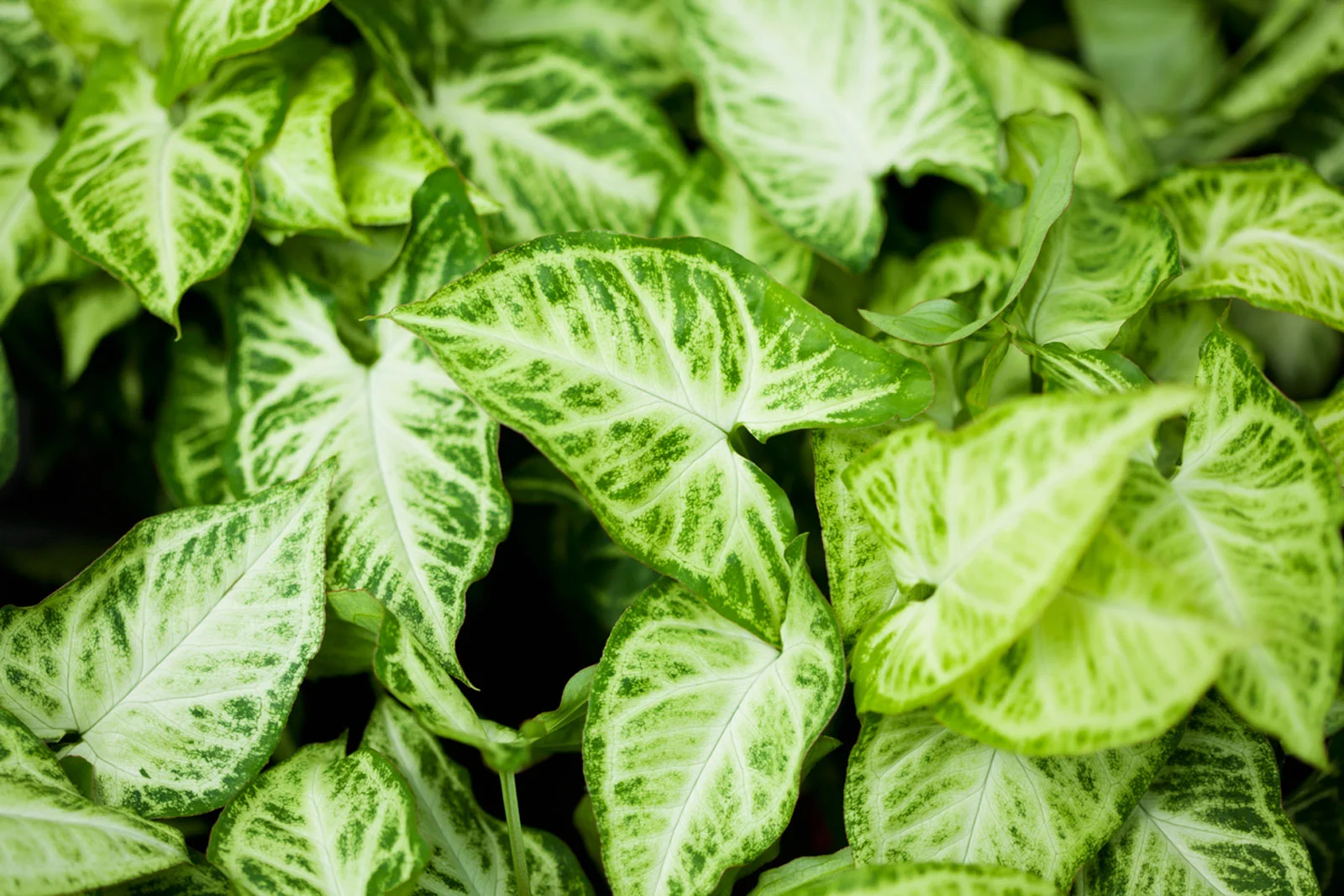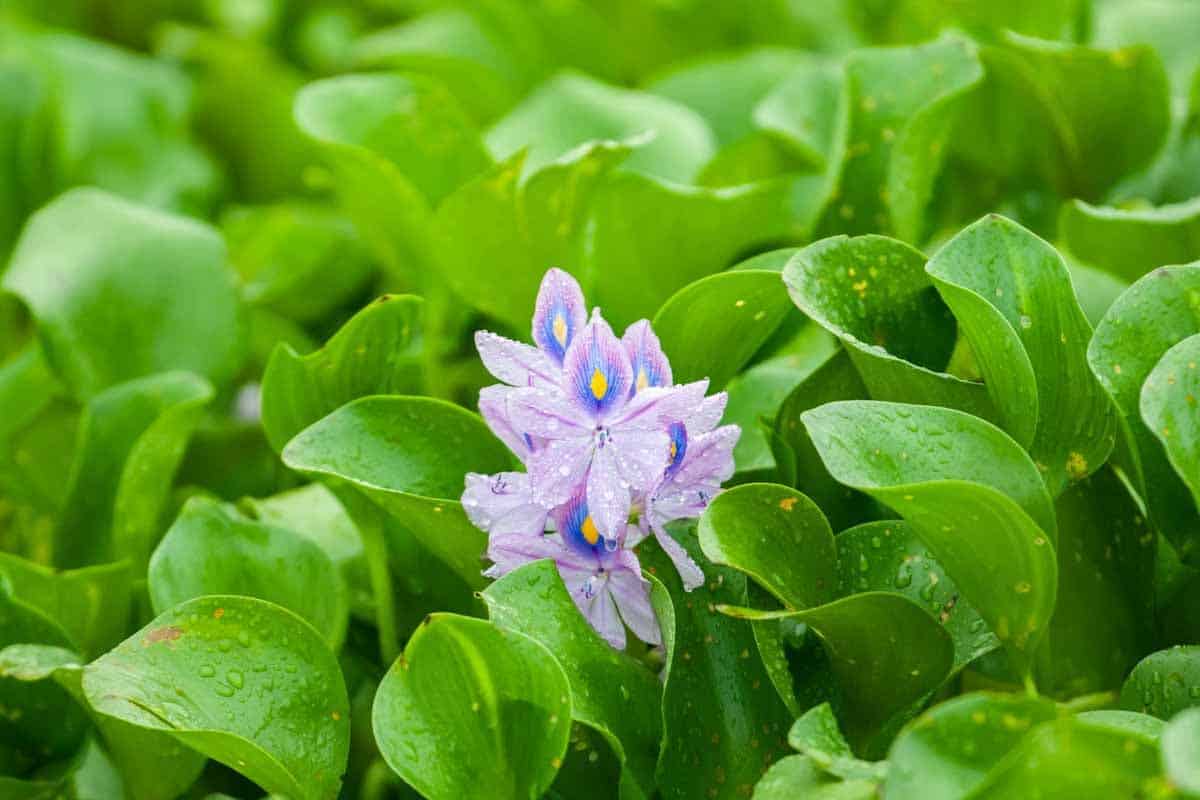
Imagine transforming your pond or water garden into a vibrant oasis teeming with life and color. What if you could choose from a variety of aquatic plants to create a serene, picturesque landscape right in your backyard? From the elegant water lilies to the hardy cattails, each plant brings its own unique charm and benefits. Whether you’re looking to attract wildlife, improve water quality, or simply add a splash of beauty, there’s an aquatic plant perfect for your needs. Dive into this list of 10 aquatic plants that will turn any pond or water garden into a stunning natural retreat.
1
of 10
Elephant Ear

Elephant ear is a striking water plant renowned for its large, heart-shaped leaves that can thrive in both wet and dry conditions. Ideal for adding a tropical touch to ponds and gardens, it helps in maintaining water quality by filtering impurities. Its lush foliage creates a natural habitat for various aquatic creatures, promoting a balanced ecosystem. Delve deeper into the unique features of this versatile plant by exploring 14 fascinating facts about Elephant ear.
Read More About Elephant Ear: 14 Mind-blowing Facts About Elephant Ear
2
of 10
Arrowhead Plant

The arrowhead plant is a versatile water plant known for its arrow-shaped leaves and ability to thrive in aquatic environments. Often found along the edges of ponds and streams, it helps stabilize soil and improve water quality by absorbing nutrients and filtering pollutants. This hardy plant also provides essential habitat for aquatic wildlife. Discover more about this remarkable plant by exploring 13 intriguing facts about the arrowhead plant’s unique features and ecological benefits.
Read More About Arrowhead Plant: 13 Astonishing Facts About Arrowhead Plant
3
of 10
Water Lily

Step into the fascinating world of the giant water lily, a true marvel of aquatic flora. These colossal plants boast enormous, floating leaves that can span over six feet, creating a stunning visual in any pond or water garden. Not just a pretty face, their structure supports considerable weight, sometimes even small animals. The flowers, blooming in moonlit nights, transform from white to pink, emitting a fruity fragrance that enchants pollinators. With roots anchored deep in muddy bottoms, they epitomize resilience and grace. Dive deeper to uncover more intriguing facts about these botanical giants!
Read More About Water Lily: 31 Best Giant Water Lily Facts
4
of 10
Lotus

The lotus flower stands out in ponds and water gardens, enchanting everyone with its beauty and symbolism. Known for rising above murky waters, it represents purity, rebirth, and resilience. This aquatic plant thrives in warm, shallow waters, boasting large, striking blooms and broad leaves that create a serene scene. Its unique ability to self-clean keeps leaves free from dirt, adding to its allure. Not just a visual delight, it’s also featured in various cultures, religions, and cuisines. Whether you’re a gardener, a nature lover, or someone curious about aquatic plants, the lotus flower has something special to offer.
Read More About Lotus: 20 Facts About The Lotus Flower
5
of 10
Water Hyacinth

Water hyacinth, a vibrant aquatic plant, thrives in ponds and water gardens, immediately catching the eye with its stunning purple blooms. This floating marvel isn’t just a feast for the eyes; its rapid growth and ability to filter water make it quite the multitasker. Often seen floating on water surfaces, this plant can transform any pond into a picturesque scene while enhancing water quality. However, its rapid growth can also lead to some challenges, making it a fascinating plant worth understanding. Dive into the world of water hyacinths and uncover why they’re a popular yet controversial choice for aquatic landscapes.
Read More About Water Hyacinth: 8 Fascinating Facts About Water Hyacinth
6
of 10
Duckweed

Duckweed, the tiny aquatic plant, floats on the surface of still or slow-moving water. It’s a powerhouse for ponds and water gardens, providing a natural filter that helps keep water clean. This green marvel grows incredibly fast, forming a dense mat that offers shelter to small aquatic creatures. Its rapid growth also means it can quickly cover open water, creating a serene green blanket. Duckweed’s simplicity belies its importance; it’s used in water purification, animal feed, even biofuel production. Adding duckweed to your pond or water garden can boost biodiversity and support a healthy ecosystem.
Read More About Duckweed: 18 Duckweed Facts For Kids
7
of 10
Cattail

Cattails are fascinating plants often seen waving gently in wetlands, ponds, and marshy areas. They’re not just pretty faces; every part of a cattail can be used. Their long, slender leaves provide excellent material for weaving, while the roots, stems, and flowers offer surprising culinary possibilities. These plants serve as natural water filters, helping maintain pond health by absorbing pollutants. Cattails also create habitats for wildlife, making them a vital component of aquatic ecosystems. Their resilience and versatility make them a fantastic addition to any water garden or pond, offering both aesthetic value and practical benefits.
Read More About Cattail: 12 Surprising Facts About Cattail
8
of 10
Creeping Jenny

Creeping Jenny, also known as Lysimachia nummularia, spices up any water garden with its bright yellow-green foliage. Thriving in moist environments, this hardy perennial loves spreading along pond edges, creating a lush, carpet-like effect. Its low-maintenance nature makes it a favorite among gardeners. Whether floating on the water’s surface or cascading over rocks, Creeping Jenny adds a touch of whimsy and color to any aquatic setting. Perfect for suppressing weeds and providing habitat for small pond creatures, it’s a versatile addition that brings both beauty and functionality to your pond or water garden.
Read More About Creeping Jenny: 8 Astounding Facts About Creeping Jenny
9
of 10
Marsh Marigold

Marsh marigold, a striking aquatic plant, adds a splash of sunshine-yellow to ponds and water gardens. Thriving in wet environments, its bright blossoms and lush green leaves make it a favorite among gardeners. More than just a pretty face, this plant supports local wildlife by providing nectar for insects and shelter for pond creatures. Whether you’re creating a naturalistic pond or a curated water garden, marsh marigold can make a versatile and eye-catching addition. Ready to explore more about this fascinating plant? Click the link and dive into its intriguing world!
Read More About Marsh Marigold: 17 Intriguing Facts About Marsh Marigold
10
of 10
Water Chestnut

Water chestnuts are a crunchy, aquatic delight often found in ponds and water gardens. These unique plants not only add texture to various dishes but also pack a nutritional punch. Loaded with fiber, vitamins, and antioxidants, they help boost your immune system and keep you feeling full. Their crisp, slightly sweet flavor makes them a favorite in Asian cuisine, adding a refreshing element to stir-fries and salads. Beyond their culinary appeal, they thrive in shallow, freshwater environments, making them a versatile plant for both food and ornamental use in aquatic landscapes. Dive into their benefits and taste the freshness!
Read More About Water Chestnut: 18 Great Nutrition Facts Water Chestnuts
Was this page helpful?
Our commitment to delivering trustworthy and engaging content is at the heart of what we do. Each fact on our site is contributed by real users like you, bringing a wealth of diverse insights and information. To ensure the highest standards of accuracy and reliability, our dedicated editors meticulously review each submission. This process guarantees that the facts we share are not only fascinating but also credible. Trust in our commitment to quality and authenticity as you explore and learn with us.
